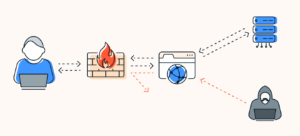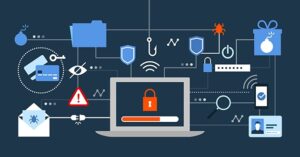The path to financial freedom often begins not with a bold investment or a major career change, but with a simple, yet powerful tool: the emergency fund. It’s the essential safety net that stands between you and unexpected financial disaster, turning potential crises into mere inconveniences. Without it, a sudden car repair, a major medical bill, or even a period of job loss can send your finances spiraling into high-interest debt, crushing your long-term goals.
Think of your emergency fund as your personal financial insurance policy. Unlike standard insurance, this policy pays out instantly in cash, and you don’t have to pay a monthly premium—you just have to save. This comprehensive guide will walk you through the why, what, and how of building your essential financial buffer, setting the foundation for a life of greater security and peace of mind.
Why an Emergency Fund is Non-Negotiable
Life is unpredictable. That’s a cliché because it’s a universal truth. You can budget down to the penny for rent, groceries, and utilities, but the moment your water heater bursts, your pet needs emergency surgery, or you’re faced with a sudden loss of income, your meticulously planned budget is useless. This is where an emergency fund shines.
The Power of Protection and Peace of Mind:
- Debt Avoidance: The primary benefit is shielding you from high-interest debt. Without a cash reserve, most people turn to credit cards, personal loans, or even borrowing from retirement accounts to cover unexpected expenses. These options often come with crippling interest rates and penalties that can take years to pay off, fundamentally derailing your financial progress. Your emergency fund allows you to pay for the crisis in cash and move on.
- Protecting Your Future Goals: Your retirement savings, your child’s college fund, or your down payment for a home are all long-term goals that should remain untouched. An emergency fund protects these important pools of money, ensuring a short-term crisis doesn’t force you to liquidate investments at an inopportune time or incur early withdrawal penalties.
- Reducing Stress and Anxiety: Financial worries are a leading cause of stress. Knowing you have a substantial cash buffer—money dedicated only to emergencies—provides an enormous sense of stability and peace of mind. It allows you to focus on resolving the emergency itself (e.g., getting better, finding a new job) rather than panicking about how you’ll pay for it.
What Constitutes a True Emergency?
An emergency fund is not a “rainy day fund” for predictable, irregular expenses like holiday gifts, annual car insurance payments, or a planned vacation. Those should be funded through separate sinking funds built into your regular budget.
A true emergency is an urgent, unexpected, and necessary expense that you cannot reasonably avoid or plan for.
True Emergency Examples:
- Job Loss or Significant Income Reduction: The most common use, covering essential living expenses until a new income source is secured.
- Major Medical or Dental Bills: Unforeseen health issues or out-of-pocket costs not covered by insurance.
- Essential Home Repairs: A burst pipe, a roof leak, a broken furnace, or a failed essential appliance (like a refrigerator).
- Major Car Repairs: Necessary work to keep your vehicle running, especially if it’s required for your commute.
- Urgent Family Needs: The sudden, necessary cost of emergency travel to care for an immediate family member.
If the expense can be postponed, is a planned event, or is simply a desire for a lifestyle upgrade (like a new TV or a weekend getaway), it is not an emergency fund expense.
The Big Question: How Much Do You Need?
The ideal size of your emergency fund is a personal decision based on your financial stability, job security, and monthly expenses. Financial experts typically recommend a two-part approach:
Phase 1: The Starter Fund (The $1,000 Milestone)
Before tackling the full savings goal, your absolute first priority is to save a Starter Emergency Fund of $1,000.
This initial amount is often enough to cover most smaller, common emergencies, like a minor car repair or a medical co-pay. Reaching this quick win builds immediate security, boosts your confidence, and—most importantly—prevents a minor setback from forcing you into debt while you work toward your larger goal.
Phase 2: The Fully Funded Reserve (3 to 6 Months)
Once your Starter Fund is established, your goal shifts to saving enough to cover three to six months of essential living expenses.
Factors that dictate where you fall in the 3–6 month range:
| Situation | Recommendation | Why? |
| Dual Income, High Job Security | 3 Months of Expenses | Another income stream is available to pick up the slack, and you are in a relatively stable field. |
| Single Income, Irregular Income, High Debt | 6 Months (or more) | Job hunting may take longer; you have no other income to fall back on; or your job is seasonal/commission-based. |
| Self-Employed, High Dependents, Health Concerns | 6 to 12 Months | Income volatility is high; a larger family means higher expenses; or medical issues could lead to frequent high costs. |
Exportar para as Planilhas
How to Calculate Your Goal:
- Calculate Essential Monthly Expenses: Go through your bank statements and add up only the must-pay bills: rent/mortgage, minimum debt payments, utilities, basic groceries, insurance, and essential transportation. Exclude non-essential spending like dining out, entertainment subscriptions, and luxury shopping.
- Multiply by Target Months: Take your total essential expenses and multiply it by your target number of months (e.g., $3,000 in expenses x 6 months = a $18,000 emergency fund goal).
4 Steps to Building Your Emergency Fund
Building a large cash reserve can feel daunting, but breaking it down into an actionable plan makes it entirely achievable.
1. Open a Dedicated, High-Yield Account
Your emergency fund must be liquid and separate.
- Separate Account: The money needs to be “out of sight, out of mind” so you aren’t tempted to dip into it for non-emergencies. Open a new savings account, ideally at a completely different bank or credit union.
- Liquid: The money must be accessible quickly (within 24-48 hours) without penalty or market risk. Do not invest your emergency fund in the stock market.
- High-Yield: Look for a High-Yield Savings Account (HYSA). These are often offered by online banks, pay significantly more interest than traditional accounts, and are still federally insured (up to $250,000). Your money will grow slowly but surely, beating inflation better than a regular checking account.
2. Automate Your Contributions
The single best way to build your fund is to take your willpower out of the equation.
- Set up Automatic Transfers: On payday, have a fixed amount automatically transferred from your checking account to your dedicated emergency savings account. Even if it’s just $50, consistency is what matters most. Pay yourself first—treat this transfer like a non-negotiable bill.
- Direct Deposit Split: Check with your employer. Many payroll systems allow you to automatically split your direct deposit, sending a portion directly to your checking and a portion straight into your savings account. You never even see the money.
3. Attack “Found Money” and Non-Essentials
Accelerate your progress by capitalizing on money that isn’t already allocated in your budget.
- Windfalls: Dedicate 100% of any unexpected lump sums—tax refunds, work bonuses, or monetary gifts—directly to your emergency fund. This can provide a huge, fast boost to your savings.
- Expense Cuts: Conduct a “Tough Love” audit of your monthly spending. Can you cancel two streaming services? Cook at home more often? Negotiate a better rate on your car insurance? Take the money you save from these cuts and immediately transfer it to your fund.
4. Prioritize Replenishment
If you ever have to use your emergency fund for a true crisis, the most important step afterward is to re-prioritize replenishing the full amount. Treat rebuilding the fund as your number one savings goal until it is back to your target level. Your financial security depends on that full cushion being ready for the next unforeseen event.
Conclusion
The emergency fund is not a luxury; it is the fundamental cornerstone of a healthy personal finance strategy. By taking the proactive steps of defining your goal, opening a dedicated high-yield account, and automating your savings, you are doing more than just moving money—you are building a fortress of financial resilience.
Start small, stay consistent, and watch as your safety net grows. You will soon discover that the greatest reward of a fully funded emergency reserve is not the money itself, but the incredible freedom and peace of mind that comes from knowing you are prepared for whatever storms life may bring. Are you ready to take that first, most crucial step toward your financial future?



